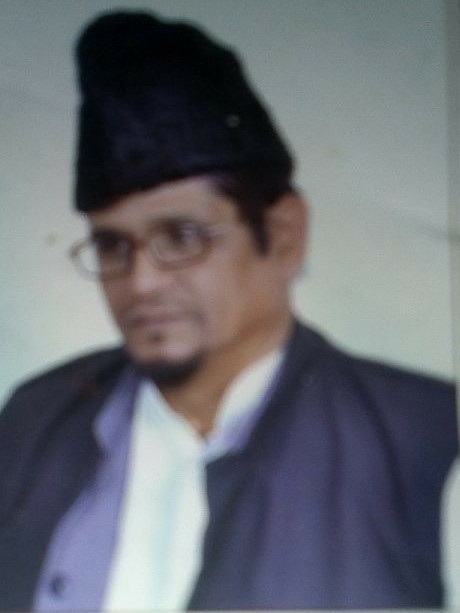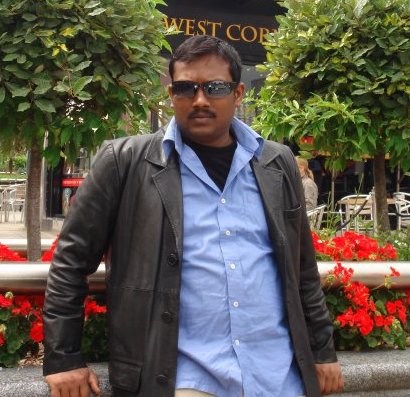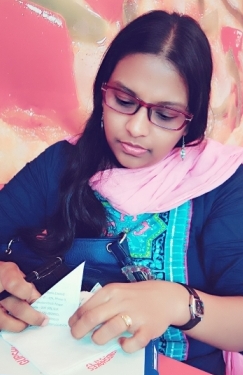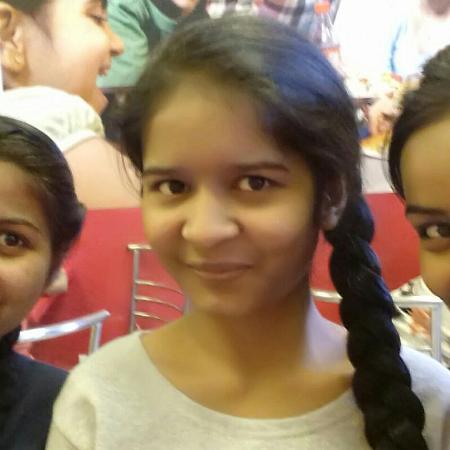Dr. Basharat Ahmed
 (Translation of Dr Ahmed’s Marathi article published in Loksatta)
(Translation of Dr Ahmed’s Marathi article published in Loksatta)
I have received many responses via email from readers of my article ‘Dharmiya Aarakshanache A (Vastav)’ (Reality of Religion based Reservations) published in Loksatta on 31st October 2013. Some of those while asking questions on certain aspects have also expressed the desire that I should write separately about these aspects in detail. Among these responses, the Muslim readers have opined that Islam doesn’t have caste, all are treated equally. So where does the question/concept of Muslim OBCs and Dalit Muslims arise in Islam? And thus I am rather trying to create casteism among Muslims. They have also advised me to study Islam and the Holy Quran in detail.
I duly respect their advice, since it is not just Islam, but i am already doing studies related to all major religions of the world which have been of great interest to me. I have been studying the Holy Quran for the last forty years, and I have studied the whole Quran (translated by various scholars in different languages) for at least thirty to forty years. I am well versed in Urdu, Marathi, Hindi, English languages. I would like to mention here very politely that I have studied all possible available translations to me in these languages while at the same time I have also studied commentaries on the same by various scholars/commentators. Also, I had the fortune to partake and contribute a little bit to the Marathi translated version of the Holy Quran that was published by Ahmediya Muslim Jamaat in the year 1991.
Islam doesn’t have castes or high-low stature and nobody should have an iota of doubt about the same. On the contrary, the Holy Quran makes it very clear that the whole human race is produced from the same man and woman, and family groups or Kabilas are only for the ease of identity. Birth doesn’t decide anybody’s superiority, rather whoever has greatest virtues amongst you is supreme (reference: Holy Quran 49:13). Prophet Muhammad, while further emphasizing this aspect explained in his last sermon that neither black has any superiority over white, nor white has any superiority over black, so also, neither Arabs have any superiority over non-Arabs, nor non-Arabs have any superiority over Arabs. Only one with greatest virtues is to be supreme.
Now though, despite this being an undoubted/indisputable truth, among Muslim community in the Indian subcontinent, caste and the concept of high and low origin is not just a matter of belief system but it is dutifully observed too, and can this reality be really ignored? I have mentioned one reason for entrenchment of this caste system among Muslims in my article and that is whichever non-Muslims came to accept Islam, though their religion changed, however, their erstwhile professions continued as it is and since these castes have been decided based upon profession in Sanatan and Vaidik religion these continued among Muslim community too. Also, the stigma attached to a profession associated with menial work in Indian society came into the Muslim community as it is. I agree that due to the large scale religious conversion this was unavoidable and I am not complaining about that. But, what is saddening is that the Muslim Mullahs-Maulavis gave religious (Islamic) sanctity to this caste system and normalized it. And while doing so they completely violated the teachings which came to be established based on Holy Quran and Prophet Mohammed’s Sunnah (actions) and Hadeees/Hadith (oral traditions) of treatment of complete equality. And what is more saddening is that the Muslim community tolerated all these activities.
A few hundred years ago, Ziauddin Barani (some Muslim scholars call him “Muslim Manu”) while stressing that Islam does attach importance to the significance of high and low, made use of Manusmriti’s language. ‘Fatawa-e-Alamgiri’, an Islamic religious book has given in great detail which castes are to be considered high and which are to be considered low. Maulavi Ashraf Ali Thanvi, belonging to 19th-20th century, in his book ‘Bahishti Zewar’ and a few other books, so also Maulavi Ahmed Raza Khan Barelvi in his book ‘Fatawa-e- Razvia’ and few other books–both have mentioned how caste hierarchy has to be observed while marrying (off a daughter). Not only this, these books also mention how a person belonging to Syed caste, even if he is illiterate and an idiot, should still be considered superior to an educated intellectual belonging to Julaha (weaver) caste. This is very depressing.
Unfortunately, these books are still being studied, taught in Madarsas and circulated in the Muslim community, and people continue to carry on conduct based on these teachings and others are made to follow it too. It is quite possible that Hindu upper castes who converted to Islam may have been behind this conspiracy and the above-mentioned Mullahs and Maulavis might well be their progeny, but what about those who have done a fundamental study of Islam, why haven’t those Maulavis discarded such books altogether? This question still remains unanswered. The people whom we activists from the movement call as Dalit Muslims are even considered untouchables in North India. Not only are inter-dining and inter-marriages forbidden for them, but in many mosques, they are not even allowed to stand in the same queue (with upper caste Muslims) and have to stand in a separate queue.
Even in Maharashtra, in most of the mosques belonging to so-called Syed/Sayyads they don’t appoint so-called low caste Maulavis as Imams and also, the first line is kept reserved for Syeds/Sayyads. Who has created the terminology/nomenclature of Ashraf, Ajlaf, Arjal, and Kamine in Muslim community and why? Only Muslim OBC activists and modern educated youngsters are talking against these social wrongs. Mullahs/Maulavis’ behavior in this regard is full of hypocrisy. Islam fundamentally doesn’t recognize any caste-creed, high-low, and even Islam’s opponents accept it too.
Upon learning that Babasaheb has thought of conversion to another religion, the then Member of Parliament, Maulana Hifzur Rahman Seoharvi asked him to consider Islam as an option. He asserted that Islam was a religion based on equality and mentioned how it rejects any kind of inequality etc. To which Babasaheb said that I have studied in depth about Islam as a religion, and I agree that Islam is fundamentally a religion based on equality, but you people have created a Manuvadi caste system in Indian Muslim community, what about that? In which caste category would you place me in once I accept Islam? Maulavi had no answer and had to return empty-handed. (Ref: Masla-a-kufu aur Ishasan-a-Islam-Maulavi…. Abdul Hameed Nomani).
Those who wish to study caste system among Indian Muslims should refer to Prof. Imtiaz Ahmed, Prof. Mujeeb, Prof Mushirul Hasan for (books in) English. There are other western writers too. One can refer to books by present Member of Parliament Mr. Ali Anwar namely, ‘Masavat Ki Jung’ and ‘Dalit Musalman’ in Hindi and Urdu languages, also Deshkal Society – Delhi’s book named ‘Dalit Muslim’. In Marathi, one can refer to भारतीय मुसलमानांची समाजरचना आणिमानसिकता (Indian Muslims’ social structure and mentality) by Prof. Fakruddin Bennur, and his lengthy article published in Sugava Publications’ special issue of the year 2001; also books by Prof. Javed Qureshi can be referred. In Urdu, the recently published book by a young writer Prof Masood Alam Falahi, namely ‘Hindustan Mein Zaat-Paat Aur Musalman’ is a very well researched book. He writes, that including Jamat-e-Islami, all Muslim sects and castes observe caste very strictly during marriage (the only exception is Ahmediya Muslims). Many a time, a daughter/girl is married off to a higher caste, non-Muslim man (a common practice among Rajput Muslims) rather than considering marriage with highly qualified so-called low caste Muslim.
The second question I was asked was ‘If Muslims in Indian subcontinent were all Hindus prior to conversion then why do they hate Hindus?’ This question has been answered by Dr Raosaheb Kasbe in his book ‘हिंदू-मुस्लीम प्रश्न आणि सावरकरांचा हिंदुराष्ट्रवाद (Hindu-Muslim crisis and Savarkar’s Hindu nationalism)’ succinctly and briefly, I will mention that here and conclude.
“Another important aspect of India’s Muslim rule is that the select ruling class Hindu families who were converted to Islam, their conversion was 100 percent complete since it was carried out with a lot of care. But those shudras and atishudras who did convert to Islam were ignored by Muslim priests and Muslim rulers. So, though they were converted Muslims still they were not completely Islamized and assimilated. Even today many Muslims still have Hindu rituals, not only that they even had those Hindu gods and goddesses hidden inside their homes up until recent times. Since this was the bigger class from which the large scale conversion had taken place, their long subjugated status in socio-economic contexts made them rebellious, aggressive against the ruling class Hindu. The treatment meted out to them by Hindu ruling class while they were Hindus is being retaliated now after becoming Muslim more aggressively and this tendency still hasn’t completely vanished (page 104-105”).
Hope this shall provide a satisfactory explanation to your questions.
~~~
Dr. Basharat Ahmed is a writer, poet and former president of Akhil Bhartiya Muslim Marathi Sahitya Sammelana.
Translation from Marathi was done by Rahul Gaikwad.










